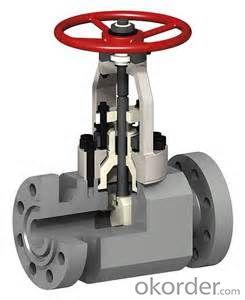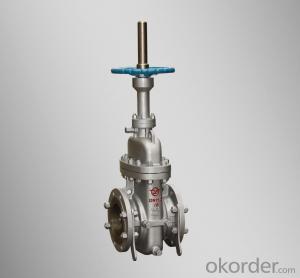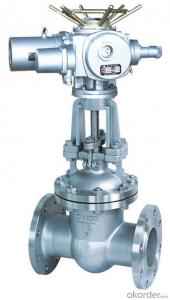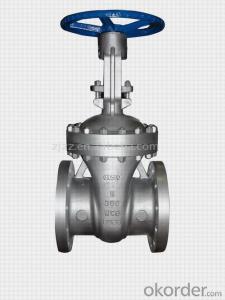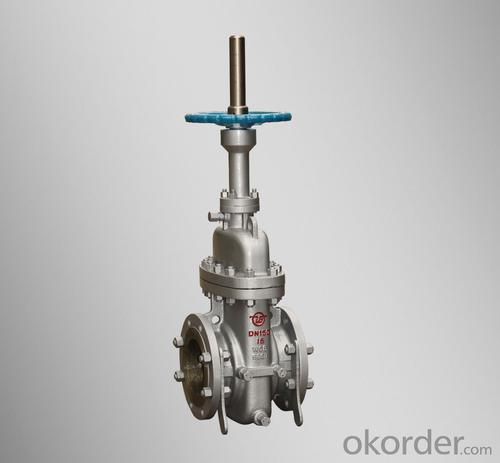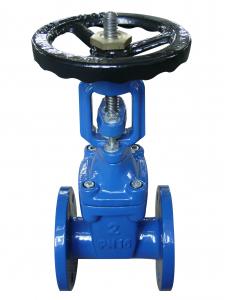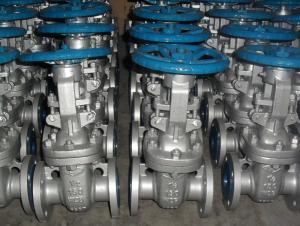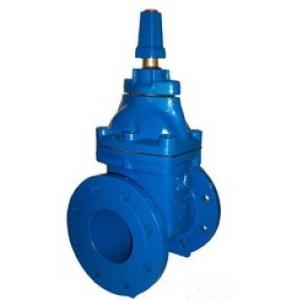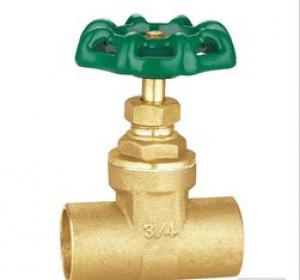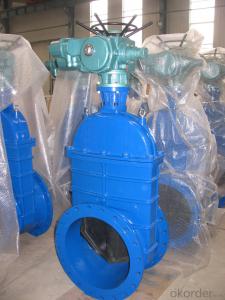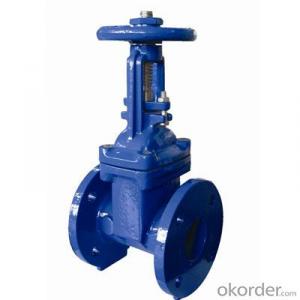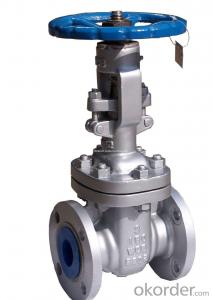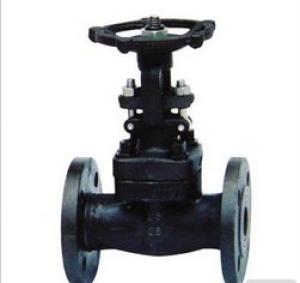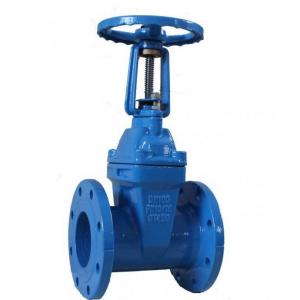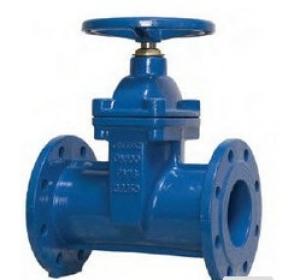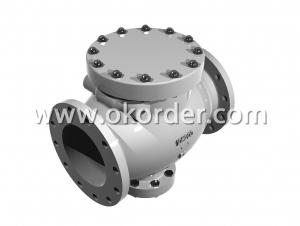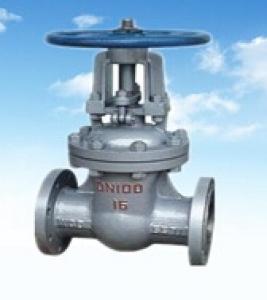Gate Valve of Non-rising Stem Good Quality from China
- Loading Port:
- Tianjin
- Payment Terms:
- TT OR LC
- Min Order Qty:
- 100 pc
- Supply Capability:
- 10000 pc/month
OKorder Service Pledge
OKorder Financial Service
You Might Also Like
1.Structure of Gate Valve Description:
A gate valve, also known as a sluice valve, is a valve that opens by lifting a round or rectangular gate/wedge out of the path of the fluid. The distinct feature of a gate valve is the sealing surfaces between the gate and seats are planar, so gate valves are often used when a straight-line flow of fluid and minimum restriction is desired. The gate faces can form a wedge shape or they can be parallel. Gate valves are primarily used to permit or prevent the flow of liquids, but typical gate valves shouldn't be used for regulating flow, unless they are specifically designed for that purpose. Because of their ability to cut through liquids, gate valves are often used in the petroleum industry. For extremely thick fluids, a specialty valve often known as a knife valve is used to cut through the liquid. On opening the gate valve, the flow path is enlarged in a highly nonlinear manner with respect to percent of opening. This means that flow rate does not change evenly with stem travel. Also, a partially open gate disk tends to vibrate from the fluid flow. Most of the flow change occurs near shutoff with a relatively high fluid velocity causing disk and seat wear and eventual leakage if used to regulate flow. Typical gate valves are designed to be fully opened or closed.When fully open, the typical gate valve has no obstruction in the flow path, resulting in very low friction loss.
2. Main Features of the Gate Valve:
• Valve body cavity using non-toxic epoxy resin,both inside and outside flashboard completely is coated with rubber
• Free of water pollution
• High manufacturing accuracy
• High strength
• Environmental protection and energy saving
• Good visual effect
3. Images
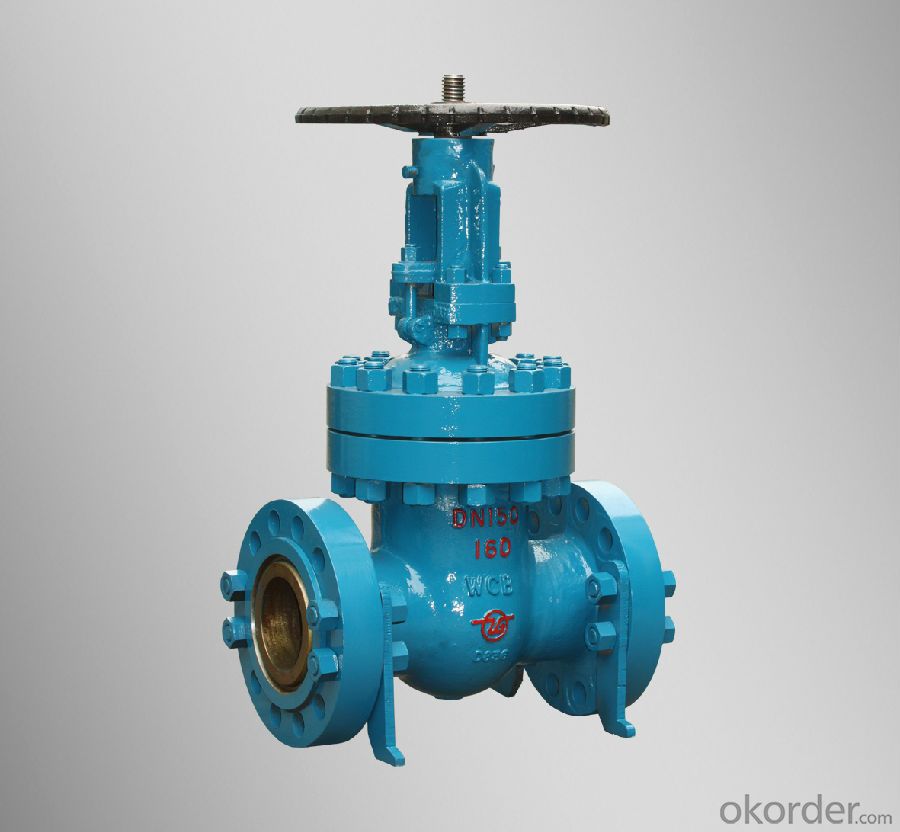
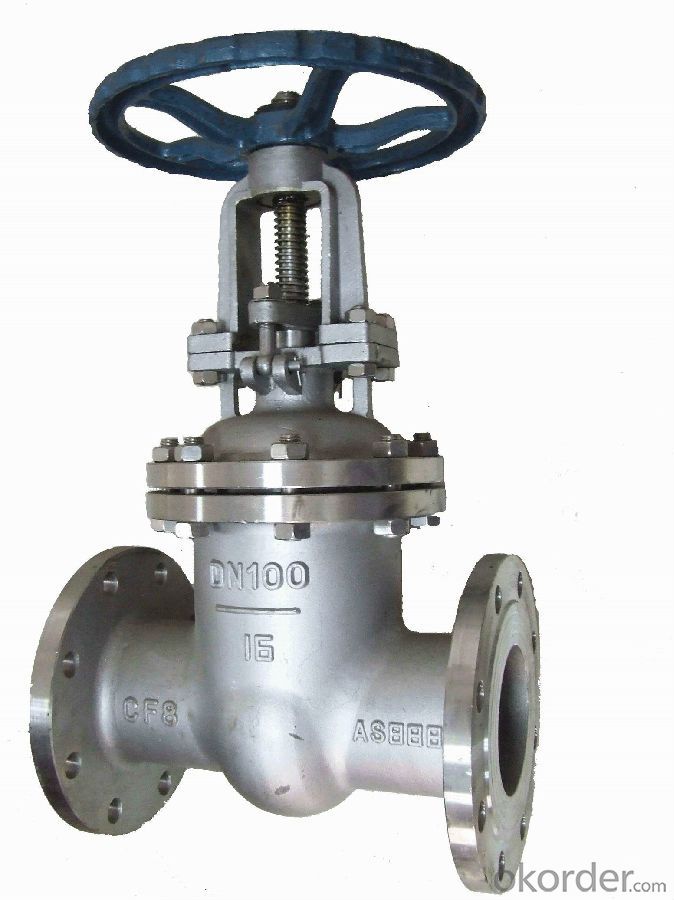
4. Gate valve Specification
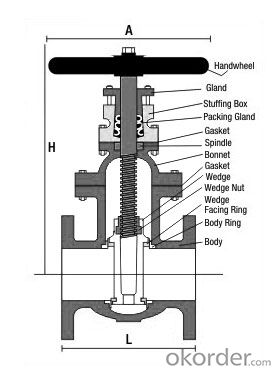

5.FAQ
1. What's are the characteristics of gate valve?
The distinct feature of a gate valve is the sealing surfaces between the gate and seats are planar, so gate valves are often used when a straight-line flow of fluid and minimum restriction is desired. The gate faces can form a wedge shape or they can be parallel.
2. What is the work principle of gate valve ?
The gate faces can form a wedge shape or they can be parallel. Gate valves are primarily used to permit or prevent the flow of liquids, but typical gate valves shouldn't be used for regulating flow, unless they are specifically designed for that purpose. Because of their ability to cut through liquids, gate valves are often used in the petroleum industry.
3. What is the structure?
Bonnets provide leakproof closure for the valve body. Gate valves may have a screw-in, union, or bolted bonnet. Screw-in bonnet is the simplest, offering a durable, pressure-tight seal. Union bonnet is suitable for applications requiring frequent inspection and cleaning. It also gives the body added strength. Bolted bonnet is used for larger valves and higher pressure applications.
- Q: What is gate valve (with force transfer joint)?
- Flange valve is equipped with a force expansion joints, easy installation
- Q: Gate valve Z41H-16Q generally used for what place?
- Gate valve is one of the most commonly used cut-off valve, mainly used to connect or cut off the medium in the pipeline, not applicable to regulating medium flow. Suitable for medium and large diameter pipelines.
- Q: What else, P54140V, 170V? What do they mean?
- P work pressureP54 temperature at 540 degrees of work pressureThe pressure at P54 100 is 540 at the temperature of 100barV valve for chromium molybdenum vanadium steelP54 pressure 140V temperature at 540 DEG C for 140bar valve for chromium molybdenum vanadium steelP54 pressure 170V temperature at 540 DEG C for 170bar valve for chromium molybdenum vanadium steelFrom the JB/T4018 "valve type model preparation method"The standard unit is MPa, but it is usually used in bar
- Q: Why can't the pressure measuring point be set at the two ends of the gate valve when measuring the resistance loss of the gate valve?
- Because of the unsteady flow of fluid near the inlet and outlet of the valve, the measured data cannot be obtained relatively accurately.
- Q: What does Z941H-25DN250 mean by electric gate valve (excluding electric equipment)?
- 9- electric (drive)4- flange connection (connection)1- plain wedge single gate valve (valve structure)H-Cr stainless steel (sealing surface material)25- nominal pressure is 25 kg, or 2.5MPa;DN250- valve by 250mm
- Q: What are the meaning of the cast rigid gate valves z41h-16c?
- According to the provisions of the JB/T 308-2004 valve type programming method:Z== gate valve4== flange connection1== rigid single gateH== sealing surface material: Cr13 stainless steel16== pressure rating: 1.6MPaC== body material: carbon steel
- Q: About fire valve is gate valve or butterfly valve problems?
- Disease is generally in accordance with the design requirements, regardless of the butterfly or tie hair to meet the requirements, are two-way valve.
- Q: Is the axial force and torque of the wedge gate valve the same?
- See where you are, it is better to compare it: wedge type single gate valve features: a structure more flexible, gate valve is simple, sealing performance better than flexible gate valve or double gate valve.
- Q: Gate valve z11h/y-16 what does that mean?
- Product Name: internal thread gate valveItem number: Z11HProduct specification: DN15-50Product pressure: 1.6MPa-2.5MPaMaterial: cast iron, cast steel, stainless steelInternal thread gate valve nominal pressure 2.5Mpa, applicable temperature range -20-232-350, applicable medium: water, oil, gas and certain corrosive liquid (W.O.G), thread type G.NPT.BSPT.BSP.DIN259/2999.
- Q: What is the difference between a flanged gate valve and a wire gate valve?
- Flanged gate valves are flanged and must be welded to the flanges of the pipe, bolted together
Send your message to us
Gate Valve of Non-rising Stem Good Quality from China
- Loading Port:
- Tianjin
- Payment Terms:
- TT OR LC
- Min Order Qty:
- 100 pc
- Supply Capability:
- 10000 pc/month
OKorder Service Pledge
OKorder Financial Service
Similar products
Hot products
Hot Searches
Related keywords
